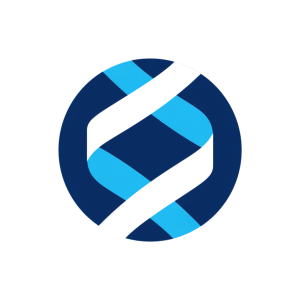Welcome to our dedicated page for Outlook Therapeutics SEC filings (Ticker: OTLK), a comprehensive resource for investors and traders seeking official regulatory documents including 10-K annual reports, 10-Q quarterly earnings, 8-K material events, and insider trading forms.
Clinical trial updates, FDA correspondence, and frequent capital raises can make Outlook Therapeutics’ SEC disclosures feel like a maze. Whether you are scanning a 300-page 10-K for cash-runway details or piecing together Form 4 insider trading data before the next ONS-5010 milestone, the technical language alone can drain hours.
Stock Titan solves that problem with AI-powered summaries that translate each document into clear insights. Our platform flags the sections that matter—R&D spending trends in the Outlook Therapeutics quarterly earnings report 10-Q filing, executive pay in the latest proxy, and every Outlook Therapeutics Form 4 insider transactions real-time. Need to compare clinical trial disclosures across periods? One click delivers side-by-side analysis. You’ll also find:
- Instant alerts for Outlook Therapeutics 8-K material events explained
- AI context on dilution risk from shelf registrations
- Concise tables that connect ONS-5010 trial phases to projected cash needs
- Direct links to each exhibit, so you can verify numbers in seconds
Investors use these tools to track FDA review timelines, monitor Outlook Therapeutics executive stock transactions Form 4, and decide if funding levels support ongoing trials. From an Outlook Therapeutics annual report 10-K simplified to the latest Outlook Therapeutics insider trading Form 4 transactions, every document arrives within minutes of hitting EDGAR, already parsed and searchable. If you have ever typed “understanding Outlook Therapeutics SEC documents with AI” or looked for an “Outlook Therapeutics earnings report filing analysis,” you’re in the right place—complex biotech filings, made clear.
Outlook Therapeutics reported a key regulatory update for ONS-5010 (bevacizumab-vikg). The U.S. Food and Drug Administration acknowledged receipt of the company’s resubmitted Biologics License Application and designated it a Class 1 review, which provides a two-month review period from the date of resubmission.
The FDA established a PDUFA goal date of December 31, 2025. This sets a clear timeline for the agency’s action on the resubmission and marks formal acceptance into the expedited review track associated with a Class 1 review.
Outlook Therapeutics filed an 8-K stating it has resubmitted the Biologics License Application for ONS-5010 to the U.S. Food and Drug Administration. The company also furnished a related press release as Exhibit 99.1 dated November 3, 2025.
The filing identifies the earliest event as November 3, 2025 and confirms the company’s Nasdaq listing under the symbol OTLK. The report was signed by Lawrence A. Kenyon, Chief Financial Officer.
Outlook Therapeutics, Inc. director Huang Andong received two stock option grants totaling 340,050 options: 286,734 options at an exercise price of $1.04 (granted 10/01/2025) and 53,316 options at $1.06 (granted 10/03/2025). The larger grant is an annual non-employee director award under the company's 2024 Equity Incentive Plan and fully vests on October 1, 2026 subject to continuous service.
The smaller grant was issued in lieu of $50,000 of cash fees and vests in four equal quarterly installments, finishing on September 30, 2026, subject to continuous service. Both option grants include acceleration upon a defined Change in Control if the reporting person remains in service immediately prior to that event.
Outlook Therapeutics director Julia A. Haller received two stock option grants reported on 10/01/2025 and 10/03/2025. The first grant is for 286,734 options with an exercise price of $1.04 that vest in full on 10/01/2026 subject to continued service and acceleration on a defined Change in Control. The second grant is for 58,648 options at $1.06, issued in lieu of $55,000 in cash fees and vesting in four equal quarterly installments through 9/30/2026, also subject to service and Change in Control acceleration.
Outlook Therapeutics director Kurt J. Hilzinger received two equity awards reported on 10/01/2025 and 10/03/2025. The filings show a stock option for 286,734 shares priced at $1.04 that vests in full on 10/01/2026 with acceleration on a Change in Control, and a stock option for 90,638 shares priced at $1.06 granted in lieu of $85,000 cash fees that vest in four equal quarterly installments ending 09/30/2026, also subject to Change in Control acceleration. Both option grants are held directly by the reporting person and have an expiration date of 10/01/2035 or 10/03/2035 respectively. The report was filed by one reporting person and signed by an attorney-in-fact on 10/03/2025.
Outlook Therapeutics director Julian S. Gangolli was granted a non‑employee director stock option on 10/01/2025 to buy 286,734 shares of common stock at an exercise price of $1.04 per share. The option is an annual grant under the company’s Non‑Employee Director Compensation Policy and the 2024 Equity Incentive Plan. The option shall fully vest on 10/01/2026 provided the director continues service through that date, and the underlying shares are subject to acceleration on a Change in Control if the director is in service immediately before such event. The filing was reported on Form 4 and signed by an attorney‑in‑fact on behalf of the reporting person.
Outlook Therapeutics, Inc. (OTLK) director Yezan Munther Haddadin reported two option grants. On 10/01/2025 he was granted 286,734 stock options with a $1.04 exercise price that, per the issuer, "shall fully vest on October 1, 2026" subject to continuous service and acceleration on a Change in Control. On 10/03/2025 he received 95,969 options with a $1.06 exercise price granted in lieu of $90,000 in cash fees; these vest in four equal quarterly installments and become fully vested on September 30, 2026, subject to continuous service and similar Change in Control acceleration. Both option grants expire in 2035 and are reported as direct beneficial ownership. The Form 4 was signed by an attorney-in-fact on 10/03/2025.
Outlook Therapeutics (OTLK) reported a director equity award on Form 4. The reporting person received a stock option for 286,734 shares at an exercise price of $1.04 on 10/01/2025. According to the disclosure, this annual grant under the 2024 Equity Incentive Plan vests in full on 10/01/2026, with potential acceleration upon a Change in Control.
A separate stock option for 58,648 shares at an exercise price of $1.06 was granted on 10/03/2025 in lieu of $55,000 of cash director fees. These options vest in four equal quarterly installments, fully vested by 09/30/2026, and are also subject to acceleration upon a Change in Control under the plan terms.
Outlook Therapeutics, Inc. (OTLK) reported stock option grants to director Faisal G. Sukhtian consisting of 286,734 options at an exercise price of $1.04 (grant date 10/01/2025) and 117,296 options at $1.06 (grant date 10/03/2025), for a total of 404,030 options. The first grant is an annual non-employee director award that fully vests on 10/01/2026 subject to continued service and accelerates upon a Change in Control. The second grant was issued in lieu of $110,000 in cash fees and vests in four equal quarterly installments, fully vesting on 09/30/2026, subject to continued service and Change in Control acceleration.


